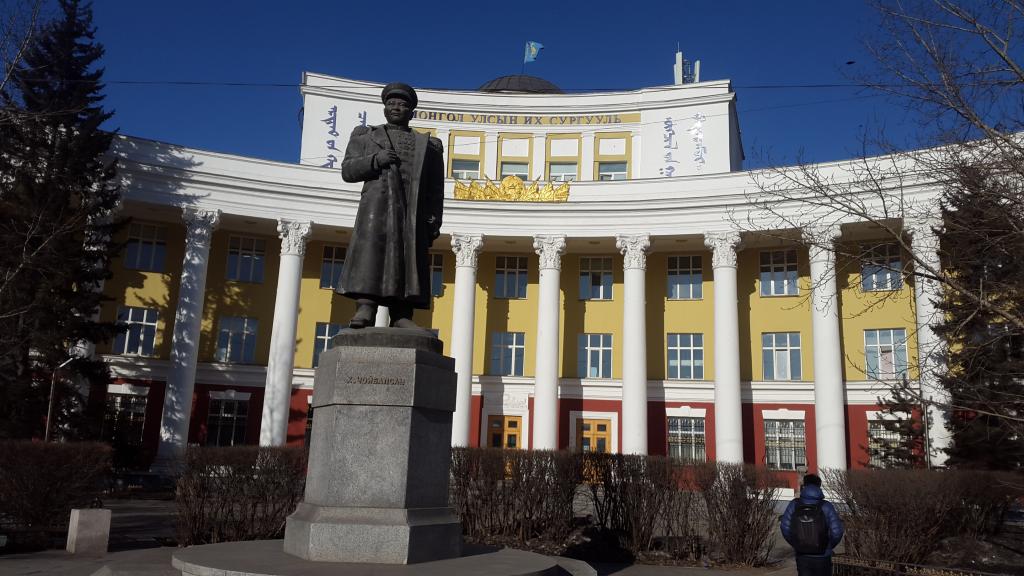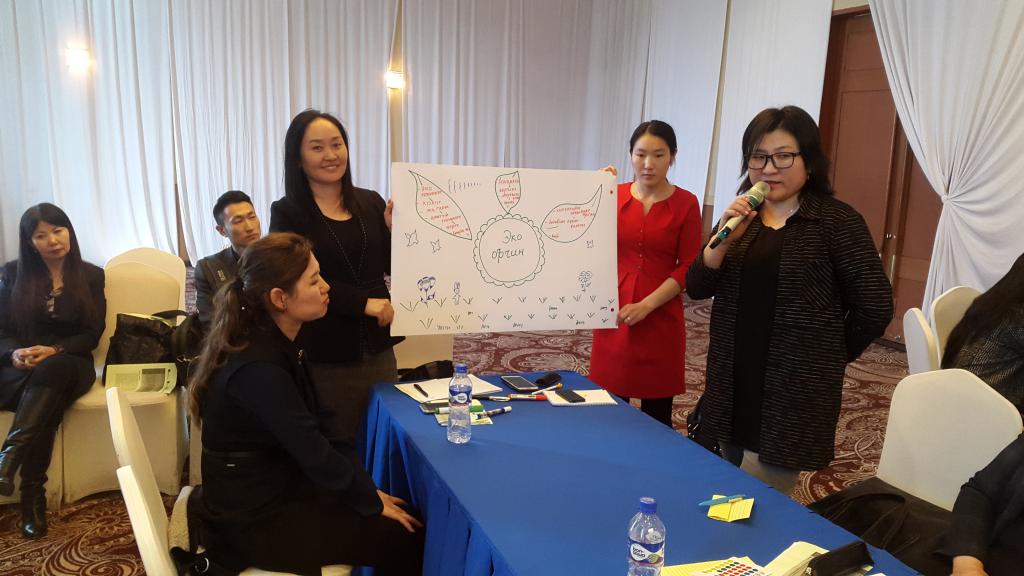Building the Future Leaders of Green and Inclusive Development in Mongolia

12-15 March 2018, Ulaanbaatar, Mongolia - What do you think is the most popular course among architecture students at the Mongolian University of Science and Technology (MUST)? It’s a course on green buildings.
“Even former students are asking us if they can take the course,” says B. Munkhbayar, a Senior Lecturer at MUST.

The interest in the course reflects a broader shift in the building sector in Mongolia where energy efficient buildings are more and more in demand.
“Currently, the manufacturing and construction sectors consume 60 percent of total electricity and 24 percent of the heat. The building heat loss is about 30 percent – we want to change this,” says L. Batjargal, Director of Policy and Planning at the Ministry of Construction and Urban Development (MCUD).
The National Green Development Policy sets a target for reducing heat loss through buildings by 20 percent by 2020 and by 40 percent by 2030. To achieve this, MCUD is working on a green building code and rating system and is revamping its construction sector policy, with support by PAGE, the International Finance Cooperation (IFC) and a Nationally Appropriate Mitigation Action (NAMA) project.
Constant Van Aerschot, who advises the Government on the new construction sector policy on behalf of PAGE highlights: “It is important to not only think about individual buildings but also about energy supply and urban planning as a whole.”
Arab Hoballah, Team Leader, SWITCH-Asia SCP Facility adds: “The goal needs to be sustainable housing and resource efficient cities, considering relevant consumption and production patterns, if we want to have a transformative impact.”

Back to B. Munkhbayar and the education sector. The green building course offered by MUST is not the only green-economy related course run by Mongolian universities.
With support from PAGE, the National University of Mongolia (NUM), the Mongolian University of Life Sciences (MULS) and the University of Finance and Economics (UFE) are developing a new undergraduate course on green economy and macro-economic modelling, to be launched in 2018. A new course on sustainable finance is planned to be piloted next year, in partnership with the Mongolian Sustainable Finance Association (MSFA), IFC and PAGE.
“When I first came to Mongolia in 2015, the higher education sector was not yet much involved in the green and sustainable development agenda. There were a few initiatives but I think the momentum created over the past two to three years is quite remarkable,” says Amrei Horstbrink, a Green Development Specialist at the UN Institute for Training and Research (UNITAR).

Beyond the launch of new courses, universities are joining forces to green their campuses and are planning to work on a submission to the Green Climate Fund (GCF). Furthermore, the Ministry of Education, Science, Culture and Sports is focusing the new higher education policy on sustainable development to encourage universities to green their teaching and operations. S. Munkhbat, Adviser to the Minister of Education, Science, Culture and Sports points out: “We are aiming to increase investments in higher education to contribute to a shift towards sustainable development”.
If university students are becoming leaders in society they need to fully integrate the concept of sustainable development. And this is not just as a matter of principle, as Cristina Martinez from the International Labor Organization (ILO) highlights: “We estimate that by 2030, 14 million jobs will be created in climate change mitigation in Asia – most of them for high skilled labor, i.e. both university and vocational education graduates.”
By greening their educational offer, the Mongolian universities are not only preparing their students to be better citizens but also to be competitive in a changing labor market.
PAGE started its engagement in Mongolia in 2013, supporting the development of the National Green Development Policy which was approved by Parliament in 2014. Over the past four and a half years, PAGE has supported Mongolia in advancing its green development agenda with evidence-based policy appraisal using system dynamics modelling, analysis of different options for implementation of the NGDP, and support for policy development and reform in specific sectors and thematic areas, such as green construction, sustainable public procurement, green economy learning, sustainable finance, waste management and trade. In the week of 12 March 2018, a series of 10 meetings and workshops took place to advance technical work under the different thematic workstreams and to discuss with national and international partners how to ensure sustainability of the work supported by PAGE.
About PAGE
The Partnership for Action on Green Economy (PAGE) brings together the expertise of five UN agencies – UN Environment, International Labour Organization, UN Development Programme, UN Industrial Development Organization, and UN Institute for Training and Research. It supports nations and regions in reframing economic policies and practices around sustainability to foster economic growth, create income and jobs, reduce poverty and inequality, and strengthen the ecological foundations of their economies.
Photo 1: National university of Mongolia.
Photo 2: A new morning for Mongolian cities? The Government is promoting more resource-efficient and inclusive urban development.
Photo 3: Mongolian universities are joining forces to green their operations and educational offer.

